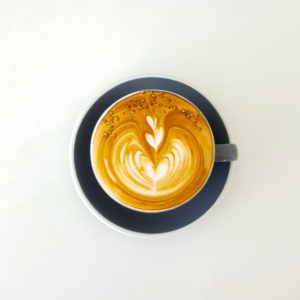As the temperatures start to warm up and the snow begins to disappear, and as the hours of daylight extend, that feeling of spring starts to arise. The return of spring often brings a sense of new beginnings, new growth or a fresh start. For many, this also means a time for spring-cleaning: the undertaking of cleaning one’s living space.
Spring cleaning. Did you just cringe? If not, I imagine that you didn’t jump for joy either. Spring cleaning is often not a desired activity, though most can agree that once it’s done, you do feel satisfied.
Here are several tips to help with your spring cleaning.
- Simplify
- Limit or remove some of the pressure in feeling that you need to do it all at once, and take it step by step. Start with one room at a time, or one category at a time (ex. clothes, photos, books, pantry items) or divide up the work over several weekends or throughout the week.
- Enlist the help of others! If you live with other people, encourage them to help out in some way. Also make it more fun by putting on some music (and maybe even take a few minutes for a dance party!).
- Do your best to keep up with regular cleaning during the rest of the year so that it is less overwhelming and not just a yearly event.
- When going through your possessions, it can be helpful to determine what you use on a regular basis and what you don’t, and whether or not those items are serving you or “sparking joy” (as discussed in a helpful resource called The Life Changing Magic of Tidying Up by Marie Kondo). Also keep in mind that there are other categories besides “throw away” when going through your possessions. See if you can reuse or repurpose, recycle or donate items before throwing them in the garbage.
2. Clean up your cleaning products
- Did you know that our indoor environment is 2-5 times more toxic than our outdoor environment? Even the World Health Organization (WHO) reports that nearly 3% of the global burden of disease is attributed to indoor air pollution. Also, we can spend as much as 90% of our time indoors. There are many possible sources of pollutants found inside the home, including dust (which is a reservoir for chemicals in the home) and even the products we use to clean our homes!
- Most conventional cleaning products contain chemicals that can affect our health, so before you begin cleaning, start by removing those cleaning products that can increase your overall exposure and body burden of harmful chemicals.
- What to look for and avoid in your cleaning products:
| Chemical: | Found in: |
| Triclosan | dish soaps, disinfectants, numerous other household products.Look for triclosan listed as an “active ingredient” in many antibacterial products |
| Formaldehyde | floor polishes, scouring cleansers, disinfectants, liquid cleansers, laundry aids, air fresheners, carpet cleaners(as well as numerous other household items and furniture, personal care products, wrinkle-free clothing) |
| Quaternary ammonium compounds or “quats” | bathroom cleaning products, all-purpose cleaners, fabric softeners, degreasers |
| Ammonia | window cleaners, drain cleaners, toilet cleaners, bathroom cleaners, oven cleaners, car polish, stainless steel cleaners, all-purpose cleaners |
| 2-Butoxyethanol (2-BE, also known as butyl cellosolve) | glass cleaners, laundry stain removers, carpet cleaners, automobile cleaners, windshield wiper fluid, degreasers, oven cleaners, rust removers |
| Parabens | various cleaning products (and most cosmetics/personal care products) |
| Phthalates | various fragranced cleaning products, including air fresheners, dish soap, even toilet paper (and most cosmetics/personal care products) |
| Sodium lauryl sulfate (SLS) and sodium laureth sulfate (SLES) | dish soap, liquid laundry detergents, cleaning towelettes, toilet bowl cleaners, (also in cosmetics or products that form “suds”) |
| Fragrance or perfume (catch all terms for masking potentially harmful chemicals) | most types of cleaning products |
| MEA (monoethanolamine), DEA (diethanolamine), TEA (triethanolamine) | floor cleaners, car wash products, degreasers, liquid laundry detergents, dish soap, oven cleaners, glass and surface cleaners |
| Coal tar dyes | most types of cleaning products |
| Phosphates | dishwasher detergents, laundry detergents, bathroom cleaners |
| Nonylphenol ethoxylates (NPEs) | stain removers, all-purpose cleaners, air fresheners, liquid laundry detergents, degreasers, toilet bowl cleaners, car wash products |
| Silica powder | abrasive cleaning powders |
| Sodium dichloroisocyanurate dihydrate | toilet bowl cleaners, surface cleaners, disinfectants, deodorizers |
| Sodium hydroxide (known as lye and caustic soda) | oven cleaners, bathroom cleaners, drain openers, toilet bowl cleaners, disinfectants |
| Trisodium nitrilotriacetate | bathroom cleaners, some laundry detergents (more common in industrial formulations) |
For more information on these chemicals (what they are and how they are harmful), check out the David Suzuki Foundation’s article: http://www.davidsuzuki.org/issues/health/science/toxics/the-dirt-on-toxic-chemicals-in-household-cleaning-products/
- You really don’t need that whole collection of cleaning products meant for cleaning various parts of your home like your windows, bathroom, toilet, floors, kitchen counters, and so forth. You can use a few DIY multi-purpose products to get the job done! See below for a simple Citrus Vinegar Cleaner recipe.
- For more DIY non-toxic home cleaning recipes, check out Meghan Telpner’s article à http://www.meghantelpner.com/blog/10-non-toxic-home-cleaning-recipes/ and David Suzuki Foundation’s resource à http://www.davidsuzuki.org/publications/downloads/2011/QueenOfGreen-Green-cleaning-recipes.pdf
- For more information on “greener cleaners” that you can purchase, check out Environmental Working Group’s website: http://www.ewg.org/guides/cleaners
3. Don’t forget your internal environment!
-
- Spring cleaning need not apply only to the home or external environment. It can also apply to your internal environment, including your thoughts.
- Reflect upon the various areas of your life—relationships, work, friendships, personal life—and examine any areas that may be weighing you down. Notice your thoughts about those particular areas and what physical response you have to those thoughts (ex. sadness, anxiety, frustration, etc). Our thoughts create feelings or emotions, which then can lead to actions and behaviours. When we can start to interrupt those unhelpful, negative and self-defeating Thought-Feeling-Action cycles with tools like breathing, we can start to begin to challenge those thoughts and re-direct our thoughts to a more neutral place or to thoughts that feel better and thoughts that reflect more positive truths (such as “I did the best I could”, or “I am enough”).
- The simple act of breathing is cleansing, where oxygen is brought into the lungs during inhalation, and carbon dioxide is released during exhalation. Throughout your day, pause and take a few deep breaths. To help focus on your breathing, inhale to the count of 5, pause, and exhale to the count of 5; repeat.
DIY Citrus Vinegar Cleaner recipe from In Sonnet’s Kitchen
Use this as a cleaner for windows, glass, counters and mopping floors.
Ingredients and Supplies
- Citrus peels (ex. lemons, oranges, limes)
- Glass jar
- White vinegar
- Spray bottle
Instructions
- Cut the peel off of the citrus fruit, and place in the glass jar.
- Cover with vinegar and allow to sit, for up to two weeks.
- Remove the peels and dilute vinegar 1:1 with water.
- Pour into spray bottle.
Note: 1. You can also mix the vinegar/water mixture with a small amount of castile soap (ex. Dr. Bronner’s soap) or baking soda for more cleaning power. 2. In a time pinch? Skip the citrus peels and two week wait time. Just dilute the vinegar 1:1 with water and you’re ready to go!
Resources
10 Non-Toxic Home Cleaning Recipes. (2017, March 28). Retrieved April 05, 2017, from http://www.meghantelpner.com/blog/10-non-toxic-home-cleaning-recipes/
EWG. (n.d.). Time for Cleaning Products to Come Clean on Ingredients. Retrieved April 07, 2017, from http://www.ewg.org/enviroblog/2016/05/time-cleaning-products-come-clean-ingredients
EWG. (n.d.). Wellness Chat: The Indoor Environment. Retrieved April 05, 2017, from http://www.ewg.org/cancer/2016/09/wellness-chat-indoor-environment
Green cleaning recipes. (n.d.). Retrieved April 05, 2017, from http://www.davidsuzuki.org/publications/downloads/2011/QueenOfGreen-Green-cleaning-recipes.pdf
Indoor Air Pollution Worse Than Outdoor. (2017, February 01). Retrieved April 05, 2017, from https://draxe.com/indoor-air-pollution-worse-than-outdoor/
(2015, August 10). DIY Citrus Vinegar Cleaner. Retrieved April 05, 2017, from http://www.insonnetskitchen.com/diy-citrus-vinegar-cleaner/
The dirt on toxic chemicals in household cleaning products. (n.d.). Retrieved April 05, 2017, from http://www.davidsuzuki.org/issues/health/science/toxics/the-dirt-on-toxic-chemicals-in-household-cleaning-products/
 Actually, one of things that mattered more to me than the material item it was wrapped in was this unfinished crossword puzzle I found of hers. To me it symbolizes so much – what we leave undone when we die, what we were working on but never finish, what our interests are.
Actually, one of things that mattered more to me than the material item it was wrapped in was this unfinished crossword puzzle I found of hers. To me it symbolizes so much – what we leave undone when we die, what we were working on but never finish, what our interests are.
 To make sure you are well-rested, count backwards from the time you need to wake up in order to determine when you need to go to bed to ensure you are getting enough hours of sleep. Make sure you are sleeping in a dark room, without stimulation (TV, computer, cell phone, iPad etc), and with a high quality air filter (especially if you have allergies).
To make sure you are well-rested, count backwards from the time you need to wake up in order to determine when you need to go to bed to ensure you are getting enough hours of sleep. Make sure you are sleeping in a dark room, without stimulation (TV, computer, cell phone, iPad etc), and with a high quality air filter (especially if you have allergies).

